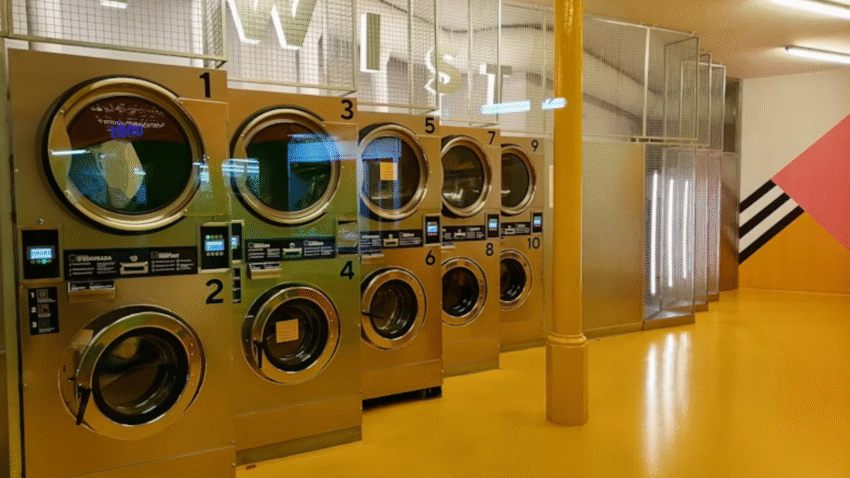Introduction
Wool dryer balls are an eco-friendly alternative to single-use dryer sheets and fabric softeners. They reduce drying time, soften fabrics, and help prevent static—all without chemicals. The best part? You can easily make them yourself for a fraction of the store-bought price. Learning how to make wool dryer balls at home will save you money, reduce waste, and give you a reusable laundry tool that lasts for years.
Why Wool Dryer Balls Matter for Your Laundry Room
Switching to wool dryer balls benefits your home, wardrobe, and the environment:
- Cost savings – One set can last for hundreds of loads.
- Eco-friendly – No disposable waste like dryer sheets.
- Chemical-free – Ideal for sensitive skin and baby clothes.
- Energy-efficient – Improves airflow, reducing drying time.
- Customizable scent – Add essential oils for a natural fragrance.
When paired with a smart laundry routine, homemade dryer balls can replace multiple products in your laundry room, making the process simpler and greener.
Step-by-Step Guide to Making Wool Dryer Balls at Home
1. Gather Your Supplies
You’ll need:
- 100% wool yarn (avoid blends—synthetic fibers won’t felt properly)
- A pair of old pantyhose or knee-high stockings
- Scissors
- String or cotton yarn for tying
- A darning needle (optional for tucking yarn ends)
Tip: Choose natural, undyed wool for the core, and if you like, use colored wool yarn for the outer layers.
2. Form the Core Ball
- Take the end of the wool yarn and wrap it around two or three fingers about 10 times.
- Slip the loops off your fingers and wrap yarn around the middle to create a small bundle.
- Keep wrapping tightly in different directions until you form a ball roughly the size of a golf ball.
Why it matters: A firm, tight core helps the ball last longer and felt evenly during the process.
3. Build Up the Ball
- Continue wrapping yarn around the core, turning the ball as you go to keep it round.
- Aim for a finished size slightly smaller than a tennis ball before felting—it will shrink during the process.
Optional: If you have leftover wool scraps or felted wool fabric, use them in the center to save yarn.
4. Secure the Yarn End
- Use a darning needle to tuck the yarn end under several layers, or simply pull it snug into the ball so it doesn’t unravel during felting.
5. Load into Pantyhose
- Place one ball into the toe of the pantyhose.
- Tie a knot in the pantyhose to keep it separate from the next ball.
- Repeat the process for each ball, making a “string” of dryer balls separated by knots.
Why it matters: This keeps the balls from tangling or losing shape during the felting process.
6. Felt the Balls
Felting binds the wool fibers together to form a solid, durable ball.
Hot Wash Method:
- Place the pantyhose string of balls in your washing machine with a load of towels or jeans (to help agitation).
- Run on the hottest water setting with regular detergent.
- After washing, transfer them to the dryer and dry on the highest heat setting.
Repeat: If the balls still look loose or fuzzy, repeat the hot wash and dry cycle until they feel dense and smooth.
7. Remove from Pantyhose
- Once completely dry, carefully cut the pantyhose away from each ball.
- Fluff the balls in your hands—they are now ready to use!
8. Optional Scenting
- Add 2–3 drops of your favorite essential oil to each ball before tossing them into the dryer.
- Let the oil soak in for a few minutes to avoid staining clothes.
- Lavender, lemon, and eucalyptus are popular choices for fresh-smelling laundry.
Using Your Wool Dryer Balls
- Toss 3–6 balls into the dryer per load (fewer for small loads, more for larger loads).
- They work best with medium heat and help reduce drying time by up to 25%.
- Reapply essential oils every 4–5 loads if you like scented laundry.
Common Mistakes to Avoid
- Using Synthetic Yarn
Only 100% wool will felt properly—synthetics won’t bind together. - Wrapping Too Loosely
Loose balls may fall apart or felt unevenly. Wrap tightly for best results. - Skipping the Felting Step
Without felting, your dryer balls will unravel over time. - Adding Too Much Essential Oil
Excess oil can transfer to clothing—use sparingly. - Expecting Instant Softness
Wool dryer balls may need a few uses before reaching maximum effectiveness.
Extra Laundry Tips & Hacks
- Reduce Static Naturally – For synthetic fabrics prone to static, pin a small safety pin to one ball to help disperse static electricity.
- Shorten Drying Time Further – Dry heavier fabrics like towels separately from lighter loads.
- Revive Older Balls – If balls start to pill or flatten, wash and dry them on high heat to re-felt.
- Use Different Colors – Color-coded balls can help you track usage or separate scented vs. unscented balls.
You might also enjoy our guide on How to Reduce Dryer Sheet Waste Easily, which pairs perfectly with this DIY project.
Conclusion
Making wool dryer balls at home is simple, cost-effective, and a great step toward a more sustainable laundry routine. With just a few basic materials and a little time, you can create long-lasting, chemical-free alternatives to disposable dryer sheets that keep your laundry soft, fresh, and static-free.
📌 Extra Tip: Make a few extra sets to give as eco-friendly gifts—wrap them in kraft paper with a tag explaining how to use them. Bookmark this guide so you can make more whenever you need replacements.
